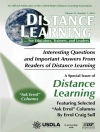How to ensure your ELA teaching sticks
One thing we know for certain: the Common Core will become yet-another failed initiative unless our curriculum provides a clear, unambiguous picture of how to teach for understanding. The solution? A concept-based curriculum. Where can you learn how to create one? Designing a Concept-Based Curriculum in English Language Arts.
Fusing Lynn Erickson′s groundbreaking curriculum model with implementation guidelines and sample units, this important new book will put you on the fast track to using concept-based curriculum in your school or district. Lanning shows you how to design a curriculum that:
- Functions as a framework for lesson plans
- Unites the efforts of ELA teachers district-wide
- Addresses core standards while focusing on student understanding
- Creates a ripple effect helping to align curriculum, assessments, and instruction
‚Lois Lanning′s new book is a clear, practical, insightful, game-changer for teachers who want to move beyond collections of facts or lists of standards to authentic, meaning-rich curriculum. I would have been a much better English/Language Arts teacher with these ideas clear in my thinking! And my students would have been much better served.‘
—Carol Ann Tomlinson, William Clay Parrish, Jr. Professor
Curry School of Education, University of Virginia
‚Lanning′s experience and wisdom allow her to see the Big Picture when it comes to teaching kids about the Big Ideas we want them all to grapple with in the course of their time in schools.‘
—Jim Burke, Author of The English Teacher′s Companion
Inhaltsverzeichnis
Foreword by H. Lynn Erickson
Preface
Acknowledgments
Part I. Preparing for Curriculum Design
1. Curriculum Matters in Teaching and Learning
Curriculum as the Master Plan
What Is Concept-Based Curriculum?
2. The Components of a Concept-Based English Language Arts Curriculum
Traditional Curriculum, Traditional Teaching
From Traditionally Designed Curriculum to Concept-Based Curriculum Design
The Relationship Between Knowledge and Process
Understanding the Two Structures
Support for These Structures
Providing a Road Map for Instruction
3. Getting Started: Doing the Preliminary Work
Leading Curriculum Change
Assembling the Curriculum Leadership Team
Review of Concept-Based Curriculum
Summary
Part II. An Introduction to the Design Process
Assembling the Curriculum Writing Team
The Role of the Leadership Team
Unit Planning Pages
4. Designing the Curriculum: Steps 1 and 2
Step 1: Creating a Unit Title
Step 2: Identifying a Conceptual Lens
Summary
5. Designing the Curriculum: Step 3
Step 3: Creating the Unit Web
Summary
6. Designing the Curriculum: Steps 4 and 5
Thinking and Understanding
Step 4: Writing Generalizations
Step 5: Writing Guiding Questions
7. Designing the Curriculum: Steps 6 and 7
Step 6: Determining Critical Content
Step 7: Determining Key Skills
Summary of Steps 6 and 7
8. Designing the Curriculum: Steps 8, 9, and 10
Step 8: Designing the Culminating Assessment
Step 9: Suggesting Learning Experiences
Step 10: Writing the Unit Overview
Part III. What a Concept-Based Curriculum Looks Like
9. What Concept-Based English Language Arts Units Look Like
A Sample Elementary English Language Arts Unit
A Sample Middle School English Language Arts Unit
A Sample High School English Language Arts Unit
Summary
10. Voices From the Field
References
Index
Über den Autor
Lois A. Lanning, Ph D, is an independent education consultant. She presents and works with districts at the international, national, and state levels in the areas of literacy and Concept- Based Curriculum design.This book is a natural extension of her three previous best-selling books in the Corwin Press Publisher’s Concept-Based collection, including Designing a Concept-Based Curriculum for English Language Arts (2013), by Lois A. Lanning; Concept-Based Curriculum and Instruction for the Thinking Classroom (2nd ed., 2017), by H. Lynn Erickson, Lois A. Lanning, and Rachel French; and Transitioning to Concept-Based Curriculum and Instruction (2014), by H. Lynn Erickson and Lois A. Lanning. In addition, Lois is the author of the bestselling book, Four Powerful Strategies for Struggling Readers, Grades 3-8: Small Group Instruction That Improves Comprehension, a joint publication between Corwin Press and the International Reading Association (2009), and a chapter in The Best of Corwin: Differentiated Instruction in Literacy, Math, and Science (2011), Leslie Laud, Editor. Lois was a classroom teacher, K-12 reading consultant, special education teacher, elementary school principal, district curriculum director, adjunct professor, and finally, an assistant superintendent of schools for the last 12 years of her career in public schools. Lois is the recipient of numerous educational awards and recognitions. Her hobbies include reading, biking, hiking, and traveling. Lois currently lives in Massachusetts with her husband. She has two children and two grandsons, whom she absolutely adores.












